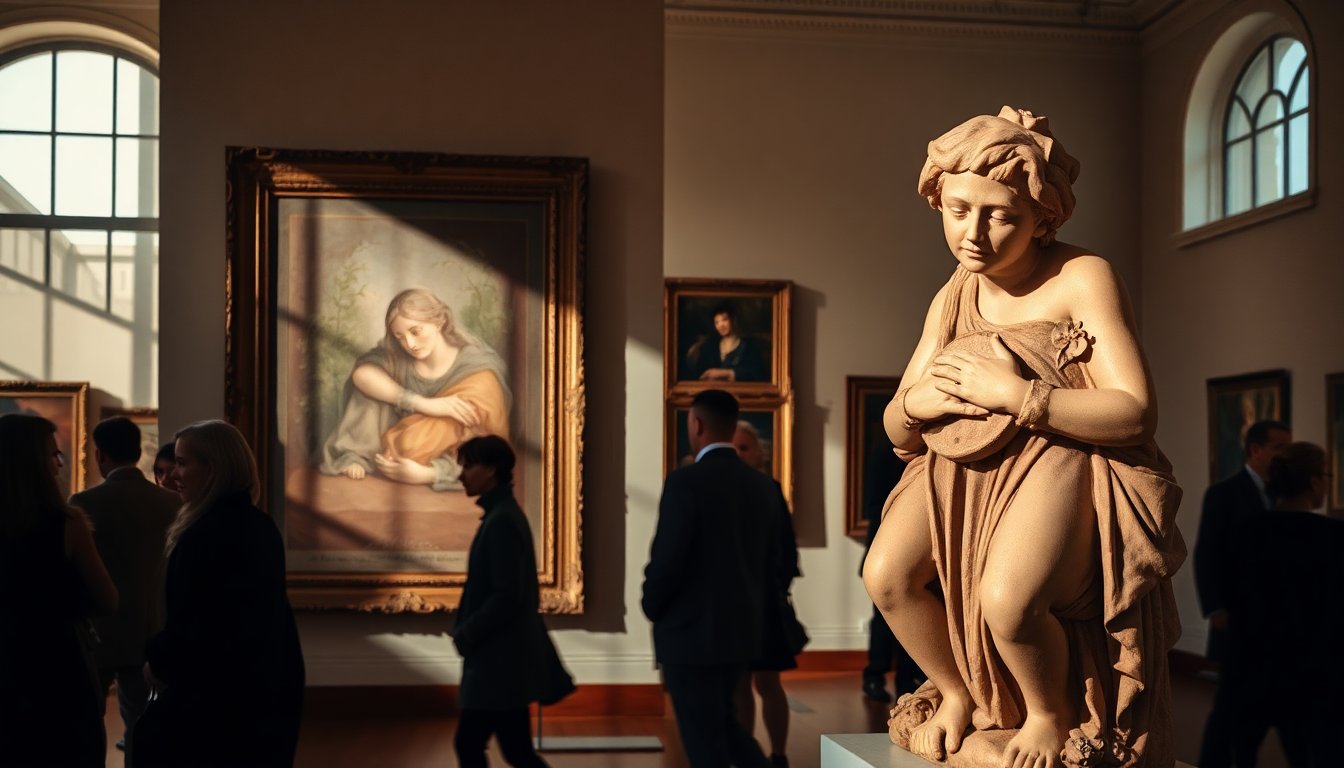Table of Contents
Art history features numerous figures whose innovative techniques and emotional depth have significantly influenced the world. Among these notable artists, James McNeill Whistler and Andrea della Robbia emerge as pivotal figures. Their works transcend historical boundaries, offering profound insights into the human experience through their unique artistic expressions.
James McNeill Whistler: A pioneer of modern art
James McNeill Whistler, an American artist from the late 19th century, transformed the world of painting with his innovative nocturnes. One of his most notable works, Nocturne in Black and Gold: The Falling Rocket, is particularly famous for its abstract style and atmospheric depth. However, this painting faced severe backlash from critics of the time, including John Ruskin, who delivered a harsh critique that incited a sensational libel trial. This legal battle underscored the conflict between traditional art criticism and the rising modernist perspective.
Artistic innovation and abstraction
James Whistler’s work marks a pivotal shift from the narrative-driven styles of earlier artists. In Nocturne in Black and Gold, he prioritizes mood and color over explicit subject matter. This invites viewers to engage with the painting as a sensory experience rather than a story to decode. Whistler’s approach to abstraction was revolutionary, laying the groundwork for future artistic movements. The painting conveys a sense of mystery; the bridge and fireworks remain as mere hints, shrouded in a haze of blues and golds, capturing the essence of a transient moment.
Whistler is now recognized as a pioneer of modernism. He transformed how artists consider color, composition, and emotional impact in their creations. His influence permeates many 20th-century movements that emphasize abstraction and emotional expression.
Andrea della Robbia: master of terracotta
In the realm of Renaissance Italy, Andrea della Robbia stands out as a significant figure in sculpture. A member of the notable Della Robbia family, he is celebrated for his stunning glazed terracotta creations, including the renowned Portrait of a Child, housed in Florence’s Bargello Museum. Andrea’s expertise in the teracotta invetriata technique, which involves applying vibrant glazes to clay, enabled him to produce works that exude both beauty and resilience.
Artistry and emotion intertwined
The Portrait of a Child showcases the essence of childhood, featuring a serene expression and gentle features that evoke both compassion and innocence. The delicate modeling of the figure and the thoughtful use of color in the clothing create a harmonious balance. This resonates with viewers and reflects the Renaissance ideal of merging spirituality with human emotion. The artwork invites reflection on the significance of nurturing the young.
Andrea’s artistic philosophy emphasized that art should transcend mere aesthetics. It should inspire emotional connections. His sculptures adorned churches and public spaces, serving as both decorative and devotional pieces. They embody the spirit of Renaissance humanistic values.
Bridging cultures and emotions
Whistler and della Robbia, though working in different eras and contexts, share a notable similarity: a deep sensitivity to light and emotion. Their art goes beyond simple representation, aiming to evoke profound feelings in their audiences. Whistler’s nocturnes convey an ethereal quality, encouraging viewers to immerse themselves in the moment’s atmosphere. In contrast, della Robbia’s sculptures capture the warmth and tenderness found in human relationships.
Additionally, Whistler’s style during the Japonisme movement showcases the influence of Japanese art, marking an intriguing cultural exchange. The compositional techniques and focus on atmospheric effects present in Hiroshige’s prints can be identified in Whistler’s works. This connection underscores how artists can inspire and inform one another across different times and places.
The legacies of both Whistler and della Robbia endure through their masterpieces and the emotional depth they convey. Their innovative techniques and commitment to capturing the essence of human experience continue to resonate with audiences. This underscores the timeless power of art as a bridge between the past and present.


